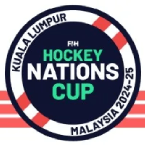
Pace, intensity and non-stop action are the three factors that first drew sisters Kim Pretorius and Tracy Martens (nee Pretorius) to indoor hockey. Despite spells with outdoor clubs in their home country South Africa, and in England, the sisters always return to the game that has given them most enjoyment.
And their perseverance has paid off. Both have had a tremendous season and as a result were chosen to represent South Africa at the African Indoor World Cup qualifier, being held in Namibia from April 8-13. Kim has since had to withdraw through a torn tendon, but Tracy is part of the women's squad facing their African rivals during the five-day tournament.
Tracy puts into words what it is she loves about the game: "I love the pace and intensity of indoor and that you are always involved in the game: even as a defender you often find yourself in the attacking circle with a chance to score goals."
While outdoor hockey remains the more popular and well-known sport across South Africa, its indoor cousin is gaining a foothold in schools and clubs. The sport's popularity has resulted in the creation of a commercial league – the PSI – a pro series which attracts some of the best players from clubs and high schools.
"When I played indoor in England, we only played a few weekend tournaments, whereas in South Africa we have a whole indoor season. We play matches for our club teams two nights a week, for about eight weeks. The provincial team is then selected to play in a national tournament over three days," says Tracy.
She explains that, as with much sport in South Africa, competition at the top level is scarce and it is not until the national teams face sides from the other continents that they get a reckoner of how they are performing. The South African teams are mostly drawn from three provinces – KwaZulu Natal, Gauteng, and the Western Cape – with some players specialising in indoor hockey only. "We are also quite isolated here," she adds. "Opportunities to compete against other countries are scarce and there aren't resources or funding to travel.
"We aren't funded by the government – we have to find private sponsorship. For instance, for the ladies, our kit for the African qualifier is sponsored, but we are travelling to Namibia at our own expense. We are hopeful that we will be able to find sponsorship for the World Cup though."
With funding virtually non-existent, why is indoor hockey still so popular among players? Tracy echoes the words of many internationals who play both versions of the game: "I find indoor a lot quicker and you have less time on the ball, so it has improved my decision making. It also sharpens my skills, improves my movement off the ball and gives me more composure."
Both South African men's and women's teams are playing in the African Indoor World Cup qualifiers this week, and the winners will represent Africa at the Indoor World Cup in 2015. Tracy is under no illusion as to the South African team's prospects. "We last went to the Indoor World Cup in 2007 and we came last, but do you know what? I am just so proud to be representing South Africa."























